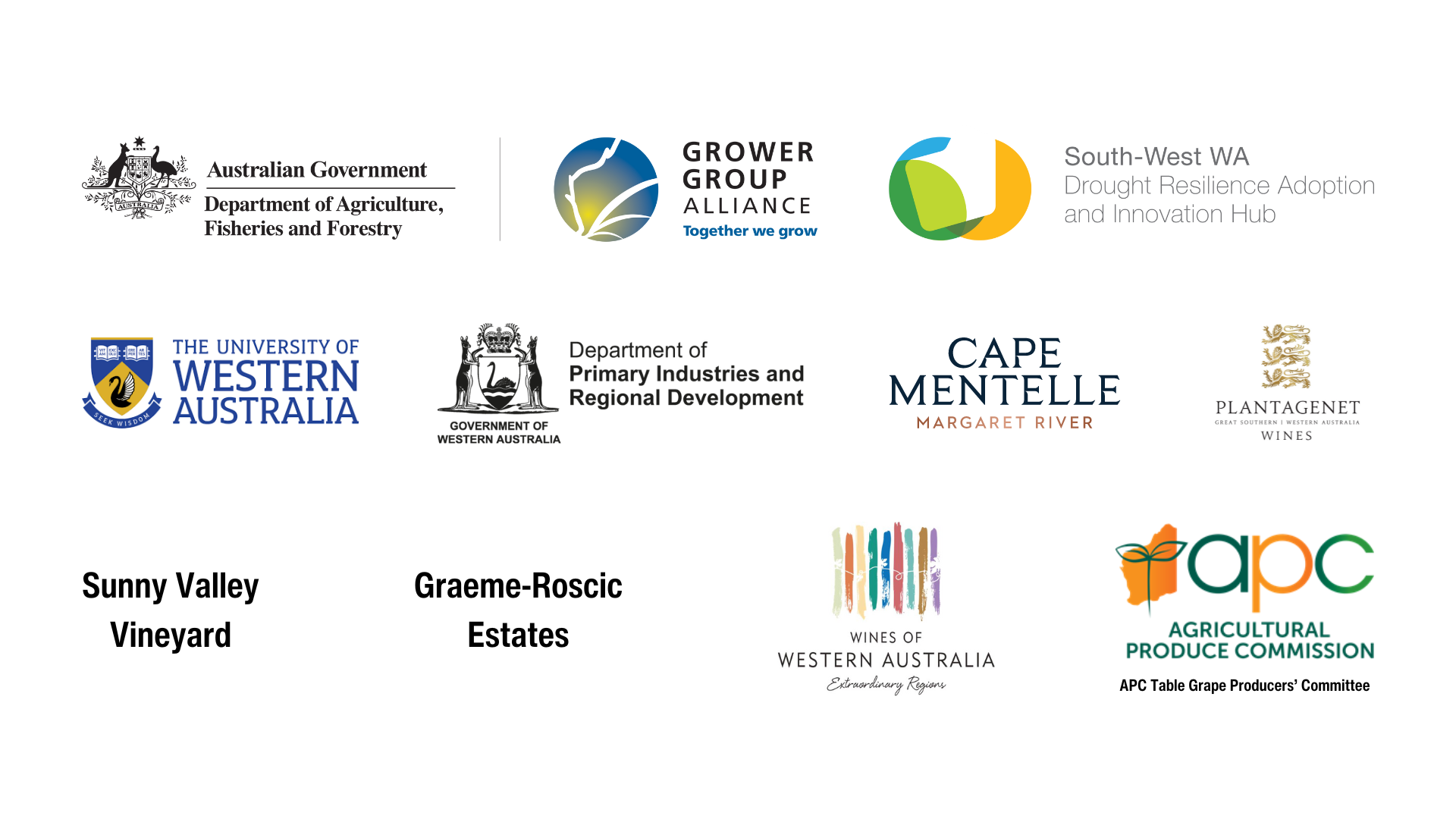Project lead: The University of Western Australia (UWA)
Project overview
The table and wine grape industries contribute $800 million to Western Australia’s economy, but rising temperatures are challenging vineyards, compromising fruit quality, and reducing high fruit premiums for growers.
Vineyard irrigation requirements rise under drought conditions. However, growers struggle to meet the extra water demand by the vines due to reductions in their groundwater irrigation licenses during temperature extremes or lack of available surface and dam water.
Many Australian vineyards have bare interrow soils due to an industry perception that cover crops compete for essential grapevine water resources.
However, the lack of ground cover can increase evaporation of soil moisture, heat reflectance into grapevines, temperature fluctuations, erosion, nutrient leaching, and weed proliferation.
This project aimed to demonstrate how winter cover crops may be dried into ‘green mulch’ in summer to alleviate these problems by covering bare soils without requiring further water resources.
This innovative approach offers a solution to improve vineyard climate resilience, challenging industry perceptions, and contributing to sustainable water management in Western Australia.
Impacts and Results
The project demonstrated that the cover crop did not compete with the vines for water resources during the summer fruit production months when growers rely on irrigation to keep their vines watered.
This result was achieved by turning the cover crop into green mulch, which eliminated the cover crop water needs and formed a protective layer over the soil surface.
These findings will assist regional strategic development and water management plans in key grape growing regions of WA, and inform other grape growing regions that exist in warm and dry Mediterranean climate zones.
This project was funded by the Australian Government’s Agricultural Innovation Hubs Program and was initiated through the South-West WA Drought Resilience Adoption and Innovation Hub.
Collaborators

